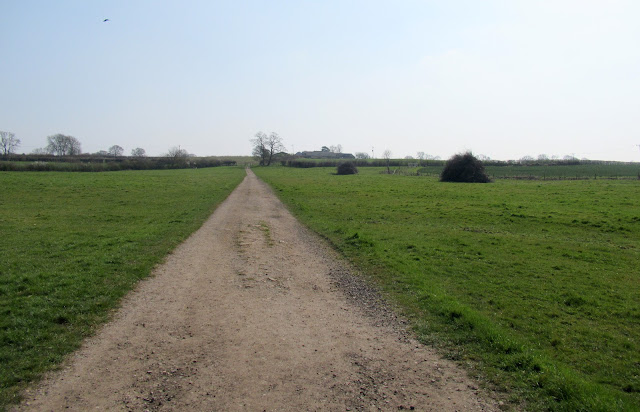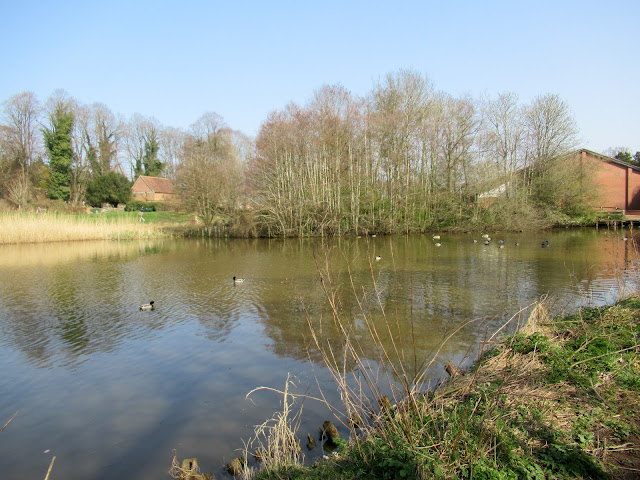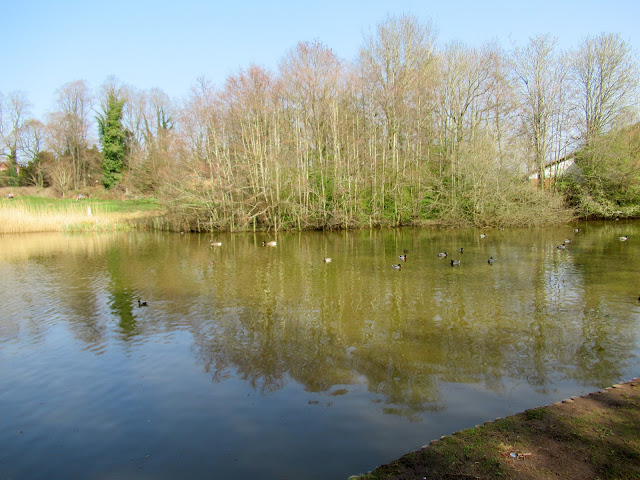The path came to a sudden end, an open, wide grassland in front of us. This is apparently the remains of The Pleasance, which was constructed by King Henry V around 1414. It was a moated pleasure garden, which would have been reached by boat from Kenilworth Castle, across the Mere, which used to occupy this shallow valley.
Its name is derived from 'le plesans en marais' - the pleasance in the marsh. It may have been under construction when Henry fought his successful battle against the French at Agincourt.
The illustration shows how it might have looked in the mid-15th century, when the area within the moat was surrounded by a stone wall.
It had a timber banqueting hall, chapel and stone place of entertainment, often in preference to the state apartments at Kenilworth cast. The moat suggests that it was built with defence in mind, and access by water would have made it more secure.
The Pleasance was dismantled by Henry VIII in the 16th century, and the buildings re-erected within the castle. The Mere was drained in 1649. The remains of The Pleasance survive as a rare and untypical example of a medieval moated garden, and archaeological excavation suggests that the island remains structural evidence and deposits relating to its use by the highest orders of medieval society.
We turned left and continued walking
after a while, we could see Kenilworth castle on our left
























No comments:
Post a Comment